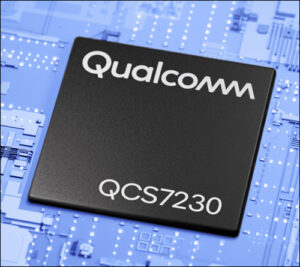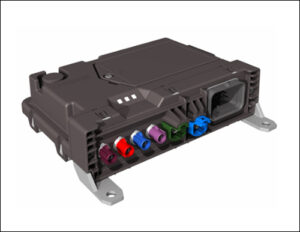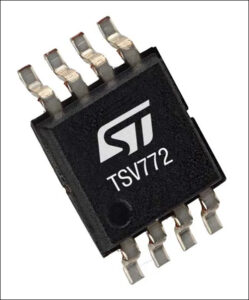Presented here are recent news announcements regarding the following organizations: Zebra Technologies, Matrox Imaging, Qualcomm, Kerlink, VIoT Group, Helium, ACTIA, Webbing, Foundries.io, Arduino and STMicroelectronics.
Zebra Technologies to Acquire Machine-Vision Firm Matrox Imaging
Zebra Technologies has announced its intention to acquire Matrox Imaging, a provider of machine-vision components and systems. The company says it hopes this acquisition will expand its offerings in the automation and vision technology sectors, following last year’s acquisitions of Adaptive Vision and Fetch Robotics. Zebra expects to fund the $875 million purchase price with cash on hand, along with financing under its credit facility. The transaction is subject to customary closing conditions, including regulatory approval, and is expected to close in 2022.
Matrox Imaging offers platform-independent software, software development kits, smart cameras, 3D sensors, vision controllers, input-output cards and frame grabbers. Its solutions are used to capture, inspect, assess and record data from industrial vision systems in factory automation, electronics and pharmaceutical packaging, semiconductor inspection and other applications.
 “Customers are increasingly deploying automated solutions to augment their front-line workers, enabling them to focus on more complex, higher value workflows, and machine vision is a key technology to help them get there,” said Anders Gustafsson, Zebra’s CEO, in a prepared statement. “This acquisition enables us to meet our customers’ evolving needs, regardless of where they are on their automation journey—from capturing and analyzing data to facilitate decision-making, to deploying physical automation solutions to accelerate the production and movement of goods and materials. We are excited to welcome the Matrox Imaging team to the Zebra family.”
“Customers are increasingly deploying automated solutions to augment their front-line workers, enabling them to focus on more complex, higher value workflows, and machine vision is a key technology to help them get there,” said Anders Gustafsson, Zebra’s CEO, in a prepared statement. “This acquisition enables us to meet our customers’ evolving needs, regardless of where they are on their automation journey—from capturing and analyzing data to facilitate decision-making, to deploying physical automation solutions to accelerate the production and movement of goods and materials. We are excited to welcome the Matrox Imaging team to the Zebra family.”
According to Zebra, its acquisition of Matrox Imaging will enable it to grow the portfolio of machine-vision products, software and services it offers customers to help them thrive in an on-demand economy constrained by labor shortages and a limited supply of upstream goods and materials. Businesses in the automotive, pharmaceutical, electronics, and food and beverage industries are among those that could benefit from the combined technologies, according to the company.
“The combination of Matrox Imaging’s technical expertise with the global footprint of Zebra Technologies presents an opportunity for Matrox Imaging to accelerate its long-term strategic plan,” added Lorne Trottier, Matrox’s president and cofounder, in the prepared statement. “With its complementary machine-vision and fixed industrial scanning portfolio, Zebra Technologies will be an excellent home for Matrox Imaging.”
Qualcomm Intros Smart Camera IoT Solution
Qualcomm Technologies has unveiled its latest Internet of Things (IoT)-based smart camera solution. The QCS7230 is part of Qualcomm’s Vision Intelligence Platform portfolio, intended for the digital transformation of the enterprise-security and public-safety segments, and to safeguard environments with smart devices at the connected intelligent edge. The solution offers AI inferencing, the company explains, and is designed to boost security and operation-effectiveness with real-time edge compute, artificial intelligence, machine learning and analytics, enabling safer and more protected spaces, cities and enterprises.
 Throughout the COVID-19 pandemic, Qualcomm reports, many organizations and communities deployed smart camera solutions. Digital transformation has aided in supporting social distancing, monitoring masks, tracking indoor and outdoor occupancy levels, and enhancing operational processes. Smart cameras equipped with connectivity, AI, analytics and cloud technologies provide cities, businesses and entities with real-time intelligence, the company explains.
Throughout the COVID-19 pandemic, Qualcomm reports, many organizations and communities deployed smart camera solutions. Digital transformation has aided in supporting social distancing, monitoring masks, tracking indoor and outdoor occupancy levels, and enhancing operational processes. Smart cameras equipped with connectivity, AI, analytics and cloud technologies provide cities, businesses and entities with real-time intelligence, the company explains.
“With the digital transformation of industries, there has been a heightened focus and need for the growing number of smart devices at the connected intelligent edge,” said Siddhartha Franco, Qualcomm’s director of business development, in a prepared statement. “Today’s cameras require superior connectivity and interoperability, powerful edge computing and AI capabilities in addition to protections for security and privacy—all of which Qualcomm Technologies is uniquely suited to provide. Qualcomm’s expansive portfolio of smart camera solutions make it easier for businesses and entities looking to deploy smart cameras to support a variety of use cases across industries, from creating safer communities to informing better business decisions.”
The solution supports smart cameras via the IoT-as-a-service model, for customers that plan to transition from traditional video-management software models to end-to-end service-based capabilities with IoTaaS. According to the company, this will accelerate edge AI services and support businesses and entities looking to deploy smart cameras and intelligent IoT devices with video collaboration, access control, enterprise and home security, 360-degree cameras, dash cameras, wearable cameras and more.
Kerlink, VIoT Group Deploy LoRaWAN, Helium Blockchain in Vietnam
Kerlink, a provider of solutions for the Internet of Things, and VIoT Group, a company that offers smart urban and industrial park development in Vietnam, has announced a partnership to roll out a nationwide LoRaWAN IoT network. The deployment, according to the companies, will support Helium‘s network, which it calls The People’s Network.
Launched in 2017, VIoT introduced smart-city applications in Vietnam the following year with a LoRaWAN streetlighting project. Since then, it has expanded its offering to vertical-market applications such as smart metering by utilities, air and water quality monitoring, and early flood incident management systems. The company’s lighting-as-a-service and connectivity-as-a-service business-leasing models will be deployed through its partnership with Kerlink, enabling Helium’s HNT blockchain and cryptocurrency mining in peer-to-peer wireless IoT networks. VIoT will distribute Kerlink Helium-enabled hotspots, while also deploying its own IoT network.
 “These deployments will make it possible for Vietnamese factories, businesses, cities and consumers to benefit from cost-effective, easy-to-deploy vertical wireless solutions,” said Viet Nguyen, VIoT Group’s founder and CEO, in a prepared statement, “and to use Helium’s global, decentralized network of hotspots to disrupt traditional telcos’ subscription-based operating models. Think AirBnB or Grab for telcos: if I have an empty room, power and Internet, why would I not use it as a network tower?”
“These deployments will make it possible for Vietnamese factories, businesses, cities and consumers to benefit from cost-effective, easy-to-deploy vertical wireless solutions,” said Viet Nguyen, VIoT Group’s founder and CEO, in a prepared statement, “and to use Helium’s global, decentralized network of hotspots to disrupt traditional telcos’ subscription-based operating models. Think AirBnB or Grab for telcos: if I have an empty room, power and Internet, why would I not use it as a network tower?”
Nguyen added, “VIoT Group collaborates with partners and household owners in strategic locations to roll out Helium’s The People Network. Our goal is to be the first to leverage this opportunity in Vietnam for corporations and local governments that aim to benefit from the most cost-effective and highly secured blockchain-powered IoT backbone network.”
The company says the initial deployment phase of its LoRaWAN IoT network, including approximately 350 Kerlink gateways, will be completed by the end of May 2022, with six Vietnamese cities and municipalities scheduled to be covered this year. The second phase, which will involve the installation of approximately 1,400 additional Kerlink gateways, is expected to be completed by the end of 2022, with 10 more cities slated for coverage in 2023.
The People’s Network uses Helium’s LongFi architecture, which combines the LoRaWAN wireless protocol with the Helium blockchain, enabling any LoRaWAN device to transfer data on the Helium network, the companies explain. This provides public, long-range and low-power wireless coverage for LoRaWAN-enabled IoT sensors and devices, since LongFi’s roaming capabilities support micropayment transactions, so customers pay based on their network usage.
“Individuals worldwide have used Helium’s network to create more than 642,000 hotspots,” added Rene Arbefeuille, Kerlink’s VP for Asia Pacific, in the prepared statement. “The connected hotspots provide cities with miles of low-power network coverage for billions of devices and are paid in Helium’s cryptocurrency, HNT. Kerlink’s industrial-grade indoor Wirnet iFemtoCell and Wirnet iFemtoCell-evolution, as well as carrier-grade outdoor Wirnet iStation IoT gateways, have been enabling the use of HNT cryptocurrency mining on the LoRaWAN protocol for the past year.”
ACTIA, Webbing Partner on Global Data Connectivity
Webbing, a global MVNO connectivity provider for enterprise mobility and IoT, has announced a strategic partnership with ACTIA involving the company’s telematics solutions. Webbing will provide ACTIA’s automotive and off-highway solutions, which feature embedded universal integrated circuit card (eUICC) technology and global data connectivity, with its WebbingCNCT solution.
 Webbing’s offerings are designed to allow compliance with data-sovereignty regulations with SIM localizations, the companies report. The WebbingCNCT solution, which can remotely provision and connect devices, is intended to streamline global deployments and ensure secure connectivity wherever a device is located. It provides DDoS attack protection, botnet disruption, malware scanning and prevention, phishing prevention and real-time malicious traffic monitoring, enabling secure IoT deployments.
Webbing’s offerings are designed to allow compliance with data-sovereignty regulations with SIM localizations, the companies report. The WebbingCNCT solution, which can remotely provision and connect devices, is intended to streamline global deployments and ensure secure connectivity wherever a device is located. It provides DDoS attack protection, botnet disruption, malware scanning and prevention, phishing prevention and real-time malicious traffic monitoring, enabling secure IoT deployments.
The WebbingCNCT solution will be implemented in ACTIA’s new ACU6 platform, engineered in Sweden’s Mjärdevi Science Park Linköping by ACTIA Nordic AB, a company of the ACTIA group that provides scalable telematics solutions for automotive applications. The ACU6 is an off-the-shelf, ruggedized platform for off-highway use, with a pre-installed data-connectivity subscription and device-management capability.
“After a thorough analysis of the many global IoT connectivity offerings, we chose to partner with Webbing because of their technical flexibility, global coverage, and their future proof connectivity solution,” said Christian Sahlén, ACTIA Nordic AB’s CEO, in a prepared statement. “WebbingCNCT provides secure, reliable and continuous Internet connection for devices wherever they are located. Its failover capabilities offer superior global access to reliable and high-quality internet at a low latency. Enterprises can seamlessly provision profiles, implement data plans across IoT deployments, optimize connectivity costs and fully manage different subscriptions in real time.”
Foundries.io, Arduino Offer Embedded Linux IoT Edge Solutions
Foundries.io, a provider of cloud-native development and deployment solutions for secure IoT and edge devices, has announced a partnership with Arduino to deliver secure, embedded Linux IoT and edge solutions with the Arduino Pro Portenta X8. The open-source electronics company manufactures open hardware development boards. Under the partnership, Arduino firm will use FoundriesFactory in its enterprise product to help customers ease development and deployment, reduce costs and accelerate revenue associated with industrial IoT and edge devices.
“A few years ago, with the legendary Yún, Arduino invented a new category of products by combining microcontrollers and microprocessors on a single hardware platform,” said Fabio Violante, Arduino’s CEO, in a prepared statement. “Now, we are taking this experience to the next level by providing enterprises with the same flexibility, with performance on steroids, thanks to the Portenta X8 (4x Cortex-A53, Cortex-M7 and 2x M4).” Users will be able to access a FoundriesFactory for the Portenta X8 hardware platform, enabling them to connect Portenta X8-based products to the cloud and develop container-based applications, leveraging the device management and DevOps capabilities available with FoundriesFactory.
 “Today, the world is different,” Violante added in the prepared statement. “You cannot think about a Linux-based device without anticipating the challenges of securing and maintaining it over time. This requires expertise, commitment and attention to every detail related to security and maintenance. For this reason, we decided to partner with Foundries.io to simplify this approach by providing a ready-to-use solution that can help our customers build systems with confidence. By embedding a FoundriesFactory in the Arduino platform, customers can be sure to choose the best solution on the market.”
“Today, the world is different,” Violante added in the prepared statement. “You cannot think about a Linux-based device without anticipating the challenges of securing and maintaining it over time. This requires expertise, commitment and attention to every detail related to security and maintenance. For this reason, we decided to partner with Foundries.io to simplify this approach by providing a ready-to-use solution that can help our customers build systems with confidence. By embedding a FoundriesFactory in the Arduino platform, customers can be sure to choose the best solution on the market.”
The IoT market is expected to more than double in the next five years, the companies report, with the market for edge devices nearly tripling, and with accelerated growth expected in the Industrial IoT, electric vehicle infrastructure and robotics sectors. Among the challenges to realizing this growth and innovation for businesses are device security and the expenses associated with building and maintaining Linux systems. Thus, FoundriesFactory offers a cloud-based DevOps service to build, test, deploy and maintain devices, which includes a customizable Linux microPlatform OS with incremental over-the-air updates.
“Foundries.io is in a unique position to advance Arduino’s vision for enabling enterprises to more easily deploy and maintain Linux-based products for IoT and edge applications,” added George Grey, Foundries.io’s CEO, in the prepared statement. “The combination of the Portenta X8 and the FoundriesFactory cloud solution will accelerate customer time to market, increase product security and enable rapid deployment and lifetime OTA management of customer devices and fleets, while giving freedom of choice for connectivity to public or private cloud services. From off-the-shelf to fully customized options, Arduino and FoundriesFactory are providing an industry leading solution for Linux-based IoT and edge products.”
STMicroelectronics Amplifier Enables Smart Features, Wireless Connectivity
STMicroelectronics has announced its TSV772 dual-operational amplifier, which the company says combines high accuracy, low-power consumption and the option of a 2-millimeter by 2-millimeter DFN8 package. Part of ST’s 5V op-amp family, the TSV772 features rail-to-rail inputs and outputs, as well as 20 MHz gain-bandwidth, and is unity-gain stable. According to ST, the device offers a slew rate of 13V/µs, as well as 7nV/√Hz input noise density and 4kV ESD capability (HBM).
 A maximum input-offset voltage of 200µV at 25 degrees Celsius ensures accurate handling of low-amplitude signals, the company indicates. Expensive and precise external resistors are not required, ST notes, nor is trimming or calibrating circuits during production. The TSV772 has an output capacitance of 47pF, simplifying use as an A/D converter input buffer. It can operate from a supply voltage as low as 2.0V and can be connected to the same rail as a low-power microcontroller to simplify design. The low minimum voltage allows longer operation with a deeply discharged battery, ST reports.
A maximum input-offset voltage of 200µV at 25 degrees Celsius ensures accurate handling of low-amplitude signals, the company indicates. Expensive and precise external resistors are not required, ST notes, nor is trimming or calibrating circuits during production. The TSV772 has an output capacitance of 47pF, simplifying use as an A/D converter input buffer. It can operate from a supply voltage as low as 2.0V and can be connected to the same rail as a low-power microcontroller to simplify design. The low minimum voltage allows longer operation with a deeply discharged battery, ST reports.
The TSV772, according to the company, is suitable for use in smoke detectors, which can leverage the op amp’s speed and efficiency to save battery energy for powering smart features, wireless connectivity and extended operating lifetime. The op amp enables accurate current measurement as the starting point for efficient power conversion in systems such as solar generators, telecom infrastructure equipment and computer servers. In addition to the TSV772, ST’s 5V op-amp family includes the dual-channel 50 MHz TSV792 and the 22 MHz TSV7722.
The TSV7722 is designed for low-side current sensing and is trimmed for a common-mode close to ground. The 20 MHz TSV772 dual op amp is in production now and is available in SO-8 and MiniSO-8 packages, as well as the miniature DFN8 version. The device is being offered in a free-sample program and can be ordered at ST’s website, with pricing starting at 73 cents apiece for orders of 1,000 units.
Exhibitors at RFID Journal LIVE! 2022 will offer tagging and tracking solutions for a wide variety of industries. To learn more, visit the event’s website.


